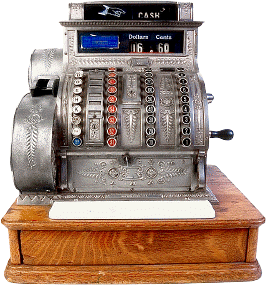From The Last Word On Nothing:

This is a picture of an old timey cash register, and thanks to the weirdness of tech and the weirdness of money, there could be actual money in it. Literal money that you can take out of the picture and spend.
Thanks to an app launched last month, you can now furtively smuggle money inside the image of your choice like you’re a WWII spy sending microdots full of secret documents on a “Wish You Were Here” postcard. “Bitcoin cash users can send transactions in a steganographic manner with the wallet hiding funds in plain sight,” reports Bitcoin.com. It’s more evidence for the resurgence of steganography – the ancient and fine art of smuggling secret messages on apparently innocent carriers – made newly relevant by the demands of the digital age.
If you’re curious about steganography and why it’s in a renaissance, you might enjoy my story from earlier this year.
When the ancient Greeks wanted to get something done, they really committed. In 499 B.C., in a bid to get out of an unpleasant job assignment, Histaeus, the leader of Miletus, plotted a rebellion against the Persian king Darius the Great. Elaborately coded missives sent to co-conspirators would only rouse suspicion. He needed something much sneakier. So Histaeus shaved his favorite slave’s head, tattooed the message on his scalp, and then waited for the hair to grow back. When the tattoo was sufficiently covered up, he sent the slave to visit his co-conspirator, who knew where to find the goods.
This bit of stealth – not just sending a secret message but doing it in such a way that obscures any communication has taken place at all – is called steganography. In the 2500 years since Histaeus started his revolution, technology has helped steganography evolve, yielding methods from invisible ink to microdots, to secret bits stowed inside digital photos. But while this kind of thing makes for entertaining cocktail party chat, it has never borne much direct relevance to most people’s lives.
That’s about to change....
....MUCH MORE